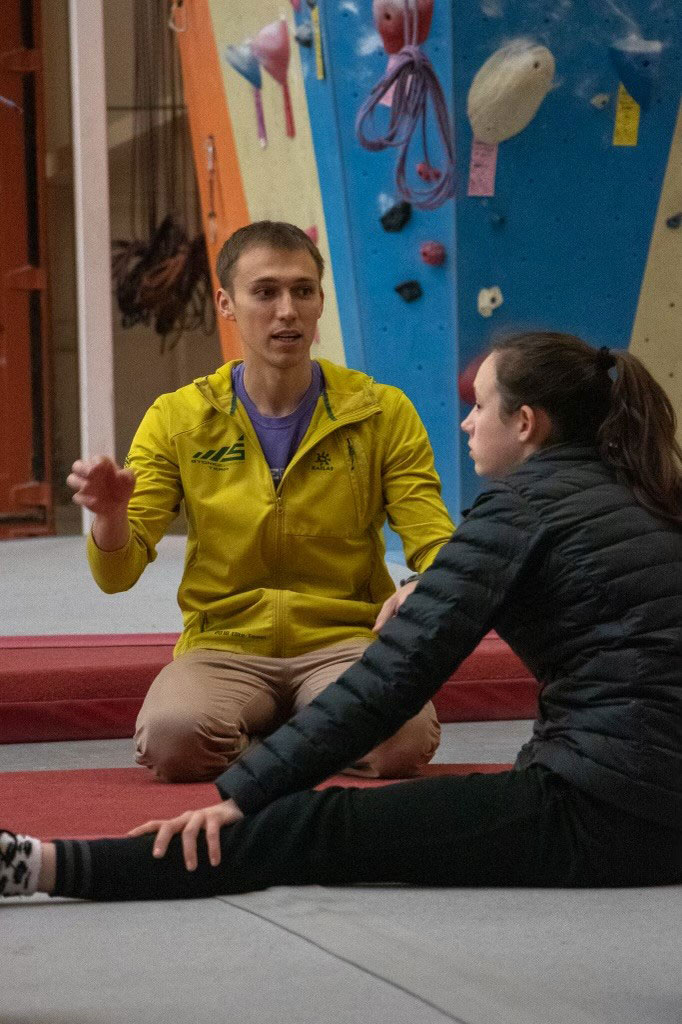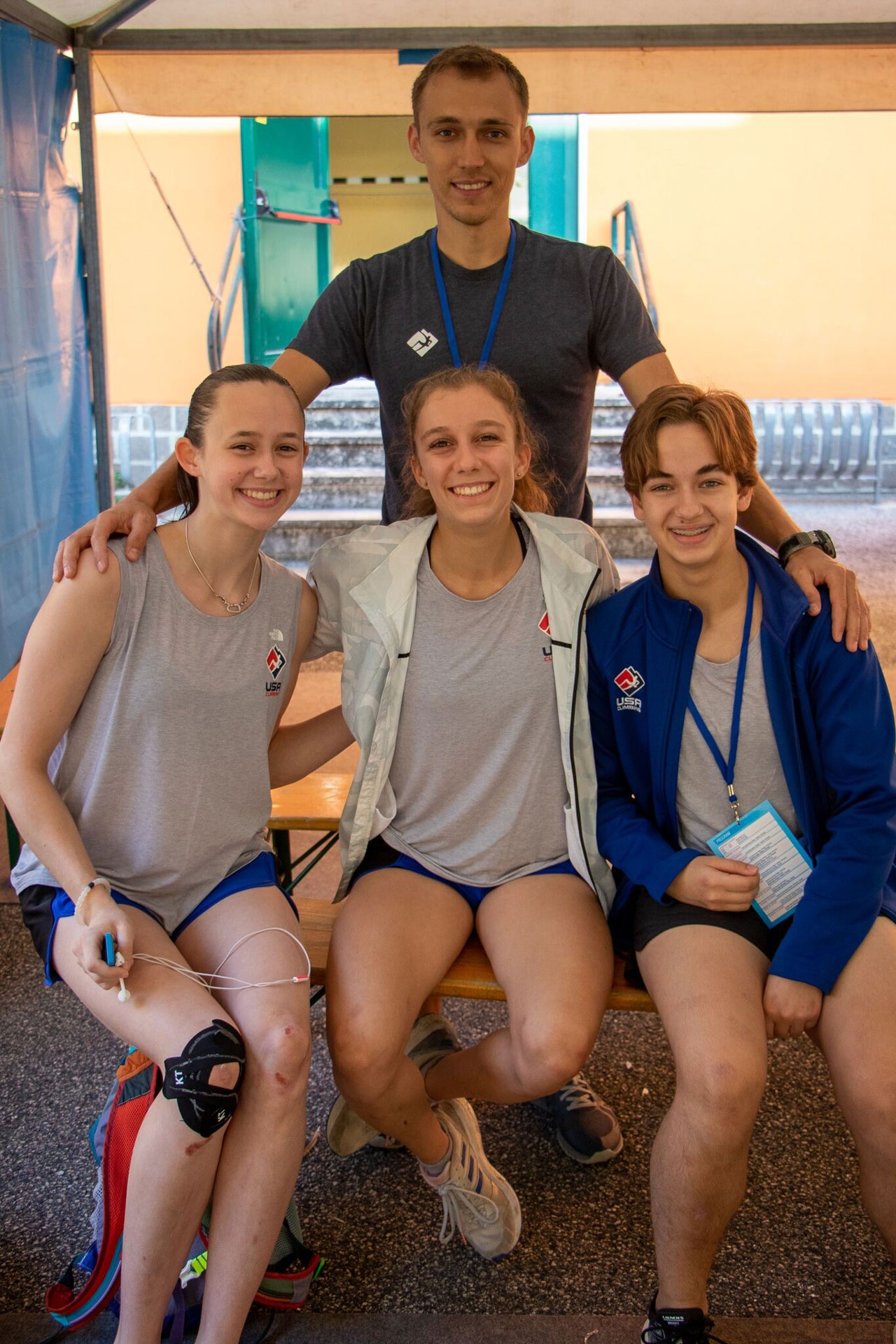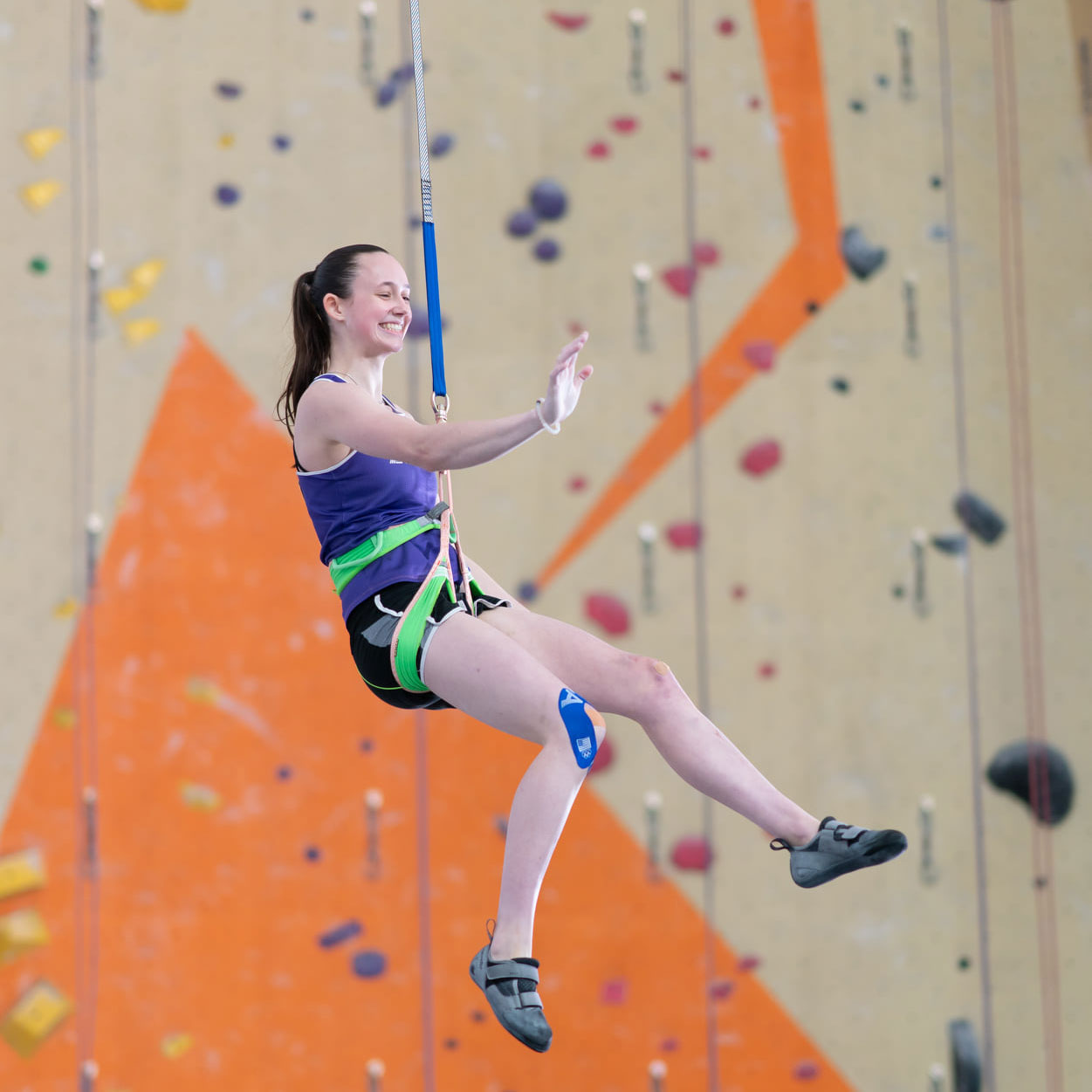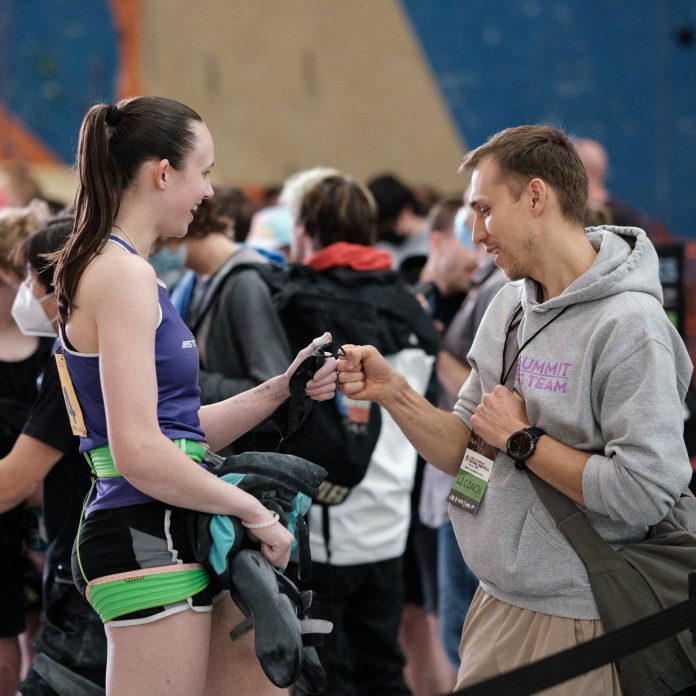
When 20-year-old Emma Hunt became the first American climber to qualify for the Paris Olympics at last summer’s World Championships, the accomplishment was rightly praised as a fitting end result of significant sacrifice, training and dedication on her part. (Hunt, now 21 years old, also happens to be the women’s Pan American and United States national record holder for the speed discipline, which currently resides at 6.30 seconds.)
But that Olympic qualification also thrust Hunt’s training and gym background into the global spotlight, and specifically the speed program at two Central Rock Gym facilities in Kennesaw and Atlanta, Georgia—formerly Stone Summit, before the acquisition this year—through which Hunt had progressed as a youth climber. Along with that focus, Oleksii Shulga, who oversaw the speed programs at those gyms (and, thus, coached Hunt) prior to managing the entire gym team, was spotlighted as well. Shulga is now quick to point out the vital role that climbing gyms—and the staff therein—have played in the formation of all eight American climbers who will take part in the upcoming Olympics.
“The specific people, the business owners, the team owners, the team managers, all these people are an important part of any climber we see right now,” says Shulga, who has continued to support Hunt and her Olympic aspirations as her personal coach, after she graduated from the gym’s youth program. “To [get an athlete] to the Olympic Games requires a lot of factors—good coaching, program in place, the heritage, the legacy, many many things, and they need to be maybe not perfectly lined up, but they need to be in a good position to ‘produce’ the right person.”

Shulga highlights Hunt’s physical and mental talent when talking about the Pan Am record and the historic Olympic berth, but Shulga also believes that Stone Summit, as a facility, possessed a well-structured program and amenities which helped Hunt develop her skill set when she was just a member of the gym’s youth team. For example, the facility in Atlanta, which spans 45,000 square feet and has 30,000 square feet of climbing, includes a 10-meter speed wall, and the Kennesaw location, a 32,000-square-foot gym which also has 30,000 square feet of climbing, includes a 15-meter speed wall.
Given the standardization of the speed route and the subsequent lack of hold variation on the wall, speed is not a discipline with as much variety as bouldering or lead, Shulga notes. Regardless, Stone Summit had long made speed a priority. “Usually for a gym owner, it is a waste of space,” Shulga, somewhat tongue-in-cheek, says of a speed wall in a commercial climbing gym. “To me, as someone who is very passionate about speed climbing, I’ve been to many gyms with speed walls, and I see people in the United States just neglecting the [speed] walls. Bouldering culture is big; it’s the subculture that has developed in gyms, even more so than in Europe, but from a business perspective, speed climbing seems to be something that not many gym owners are interested in.”

Yet, Emma Hunt’s upcoming Olympic appearance will be the payoff, and the “proof,” so to speak, that speed can be a worthy investment for a gym, even if commercial participation might be limited. Such a payoff often requires that gym owners and managers make a leap of faith and look beyond short-term profit margins when deciding to devote valuable wall space to speed.
“The gym owners—especially gym owner Daron Pair [prior to the Central Rock Gym ownership change], he was absolutely supportive of any decisions I made, or that [team owner] Claudiu Vidulescu made, as far as using a speed wall, setting technical sections of the speed wall,” Shulga explains. “I had full access to whatever I needed to do, as long as it was effective for training—even though it was not related to customers, it was related to the team program.”
There is no denying that speed, as a discipline, has had a rocky road of cultural and commercial acceptance in the larger climbing world. Prior to the Tokyo Olympics (in 2021), Adam Ondra publicly chastised speed climbing—a point that Shulga is quick to point out—particularly when speed was included in a novel, three-event “combined” discipline. At the upcoming Paris Olympics, in contrast, speed climbing will be featured as its own discipline—not combined with bouldering or lead climbing like it was at the Tokyo Olympics—and Shulga stresses that this separation has helped some gym owners become more accepting of speed. “In the U.S., there has long been this whole concept that speed is a ‘step brother’ of climbing, but now it’s in a different place because of growing support from gym owners. Still, not many teams operate on the level we do—we are very lucky, as far as having full support.”
A Well-Structured Program
A gym possessing a speed wall is only part of the equation, according to Shulga. At Stone Summit, much of Emma Hunt’s development in the years preceding the Paris Olympics took place off the wall. In fact, depending on the training cycle, Shulga says that up to 30 percent of Hunt’s training in the lead-up to Hunt’s Olympic berth entailed the use of other gym amenities, specifically cardio equipment and free weights. (Shulga says he personally prefers the amenity of exercise bikes, as opposed to treadmills, since they entail less rigor on an athletes’ knees.)

But Stone Summit’s programming was also structured and organized in a manner that allowed Emma Hunt to thrive. The Stone Summit team was—and still is, with its Central Rock Gym rebranding—quite large by any standard: composed of more than 300 total youth climbers (spread across the two facilities), with up to 40 coaches in the program. Some of those coaches are salaried, while many are paid hourly on a part-time basis. The team is broadly divided into a recreational tier and a competitive tier; the recreation tier has six different “clubs” (meaning, levels), while the competitive tier is split (by age and USA Climbing qualification level) into four different levels—the highest of which being the “elite” team.
Shulga says that the various categories within the whole team are fluid—and that climbers are constantly moving into different levels and tiers—although they are only allowed to move to a different level within the competitive team once per season. As Shulga explains, “It’s important to understand that in each tier and level, the kids build up relationships with the other kids on their team and with the coaches—those factors are important too. If you move a kid too often or too early, you need to understand the social dynamics and friendships; it could be difficult for a kid to move, even if they might be ready to move up in terms of climbing proficiency. It’s not always good to do it.”

The frequency of practices within the team’s program is also unique. Team owner Claudiu Vidulescu holds practices for youth climbers five days a week (and sometimes on Saturdays), but there is variability there as well. As an illustration, climbers on the elite team are required to attend a minimum of four of those weekly practices. It was actually in that leeway that Emma Hunt’s dedication first started to shine. Shulga remembers Hunt as a youth climber not only attending the team practices eagerly, but also being open to private lessons. And even when Hunt “aged out” of the team program, she sometimes showed up to participate in team practices—a perk that is offered to all alumni of the Stone Summit/Central Rock Gym youth team in Georgia.
A Family Dynamic
Shulga acknowledges that such an expansive team program comes with challenges, from turnover of hourly coaches to an occasional lack of understanding (from parents and would-be coaches) of how the team operates and how team members can progress from one level to the next. Shulga came to the United States from Ukraine in 2016; his key experience at the time had entailed overseeing a team of just 12 youth climbers in Ukraine, so he struggled with a learning curve himself. “It took me a while to grasp all the levels and learn what I can do with the coaches at the lowest level, compared to how I can help the coaches at the very top,” he admits.

On the flip side, Shulga says that the team members, themselves, don’t usually seem overwhelmed by the breadth of the gym’s team program. Shulga likens the team to an extended family, and says, “When you have a big family, you need to make sure you’re giving attention to every single family member.”
Shulga remembers giving equal attention to everyone, even as Emma Hunt began setting national records.
“I didn’t think of Emma as the only one who might go to the Olympics,” Shulga reflects. “But she was a hard worker, and her talent was working hard and smart—she believed there were no boundaries; I recognized that right away, and it worked out for her really well. I’m glad that my experience and my passion for coaching worked for her. But there were—and still are—so many good, talented kids.”
Editor’s Note: As mentioned, Stone Summit/Central Rock Gym is just one of the climbing gyms that helped a Team USA athlete reach the Paris Olympics. The other gyms—and respective Olympians—are: Pacific Edge in California (Natalia Grossman), ABC Kids Climbing in Colorado (Natalia Grossman, Colin Duffy and Brooke Raboutou; as well as Garrett Gregor, IFSC Head Routesetter for the bouldering portion of the Paris Olympics), New Jersey Rock Gym in New Jersey (Jesse Grupper), Hoosier Heights in Indiana (Piper Kelly), Movement Plano in Texas (Sam Watson), and Planet Rock in Michigan (Zach Hammer). For more information about the climbers qualified for the Paris Olympics, head to CBJ’s Paris Olympics Media Resource for Climbing Gyms and CBJ’s Paris Olympics A-to-Z Guide.

John Burgman is the author of High Drama, a book that chronicles the history of American competition climbing. He is a Fulbright journalism grant recipient and a former magazine editor. He holds a master’s degree from New York University and bachelor’s degree from Miami University. In addition to writing, he coaches a youth bouldering team. Follow him on Twitter @John_Burgman and Instagram @jbclimbs. Read our interview Meet John Burgman, U.S. Comp Climbing’s Top Journalist.








